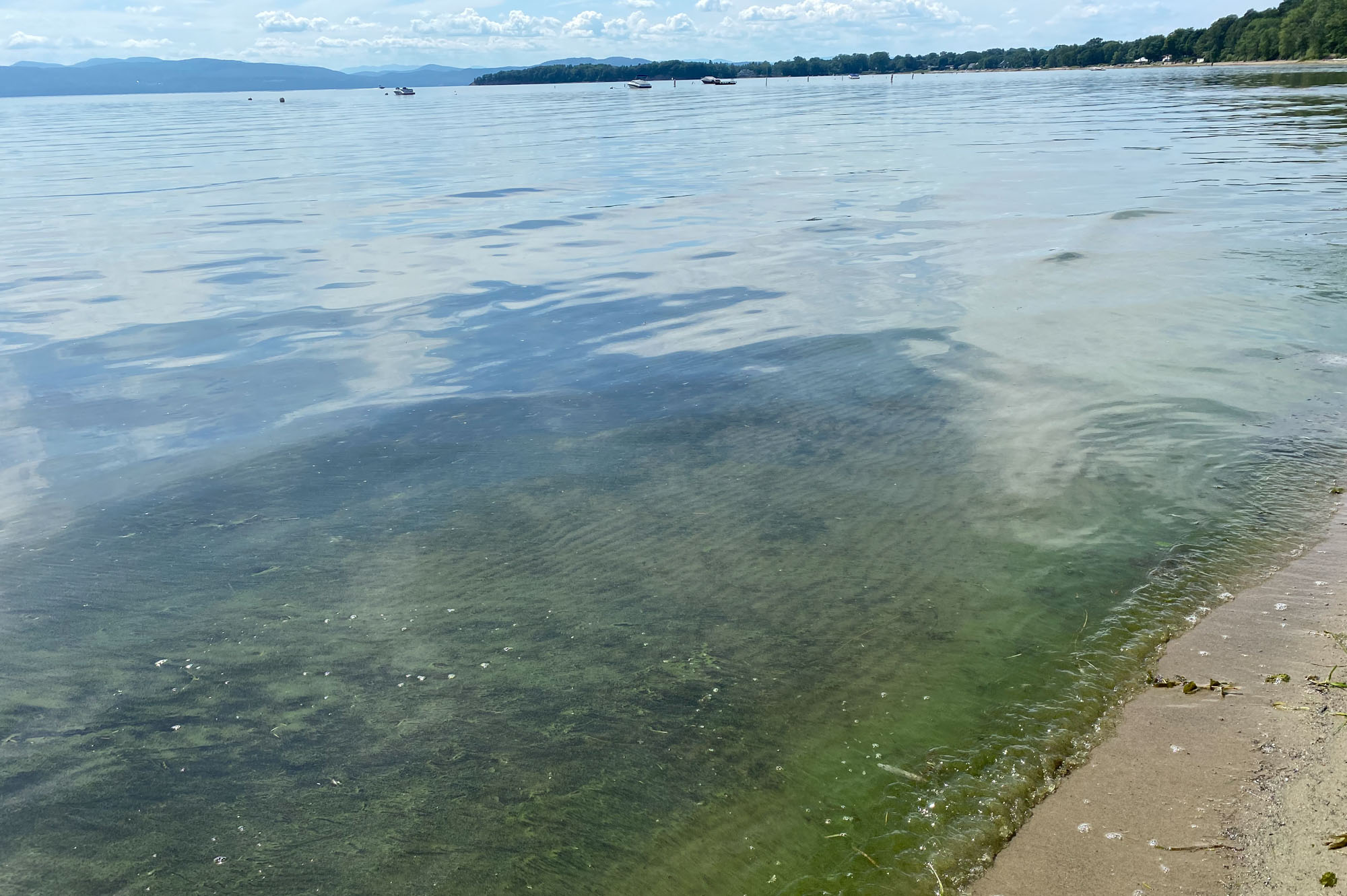This week’s high temperatures have warmed up Vermont’s lakes, causing blooms of cyanobacteria to appear for the first time this year, according to the Vermont Department of Health.
Cyanobacteria are microorganisms that are a natural part of freshwater ecosystems, but they can become dangerous to humans and animals when they multiply quickly and form blooms on the water’s surface, according to the health department. Calm, warm water creates the ideal conditions for cyanobacteria to grow, according to the Lake Champlain Basin Program.
The Department of Health’s cyanobacteria tracker currently shows no locations under high alert for such blooms. However, four areas on Lake Champlain have reported low levels of cyanobacteria, according to the tracker: the northern shore of Malletts Bay and Brown Ledge Camp in Colchester, and the marina and Texaco Beach in Burlington.
Texaco Beach is currently closed for swimming due to the high cyanobacteria levels, according to Burlington’s Department of Parks, Recreation and Waterfront. Staff members are testing water quality three to four times daily and will close other beaches as necessary.
Cyanobacteria blooms are green or blue-green in color and can look like paint splatters on the water’s surface. Toxins produced by the bacteria can be harmful to humans and animals, causing rashes, stomach problems and other health concerns.
The blooms can be especially dangerous to children and pets, who may accidently swallow water while playing in it, according to the Department of Health.
Cyanobacteria blooms also pose a threat to freshwater ecosystems as a whole, according to the U.S. Environmental Protection Agency. Blooms harm water quality, food resources and habitats for aquatic species, and they reduce oxygen levels in the water which can lead to illness and death in fish populations.
As cyanobacteria is tracked in Vermont year after year, locals are noticing that blooms are appearing both earlier and later in the summer season.
Alec Kaeding, Burlington’s waterfront and parks operations manager, said June would have been considered “unusually early” to see a cyanobacteria bloom a few years ago, but he wasn’t surprised to see the bloom at Texaco Beach this month.
“From my observations, we’re seeing these earlier and earlier every year,” he said. “I think it’s the norm now.”
In its 2018 State of the Lake study, the Lake Champlain Basin Program reported that blooms were concentrated in July and August. By 2021, the annual report showed that blooms were becoming common in the early fall as well.
“Unfortunately, climate change may increase these periods of warm and calm conditions to make increasingly favorable conditions for blooms in the future,” noted the 2021 report.
Read the story on VTDigger here: Heat wave brings cyanobacteria back to Vermont lakes.

